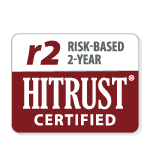When employers faced unprecedented challenges during the pandemic, Premera Blue Cross (Premera) focused on providing them with additional flexibility. The health plan, which is the largest in the Pacific Northwest and serves more than 2 million people, extended its grace period for employer premium payments from 30 days to 60 days, waived re-rating of premiums when enrollment shifted by more than 10%, and allowed mid-year open enrollments without rating implications.
“When we realized what the lockdown was doing to the economy and how COVID was changing our industry, our goal was to do everything we could to be a partner to our employer clients and help them continue offering health benefits,” said Jim Grazko, Senior Vice President of the Alaska Market and Chief Underwriting Officer at Premera Blue Cross, during a recent panel discussion with Prealize Health.
Now, as the vaccine rollout continues and the country opens up more fully, Premera remains focused on meeting employers’ new and evolving needs.
Part of that effort includes anticipating potential new challenges employers could face due to pandemic-related care deferrals. More specifically, a potential boomerang effect of high cost claimants who delayed care in 2020 but whose diseases continued to progress. With tightening budgets that have yet to recover from COVID, the impact of high-cost claimants could be particularly challenging for employers.
As a result, Premera is offering employers enhanced clinical outreach and digital outreach programs, while continuing to own and offer its own stop loss products. The result is an integrated experience and one-stop shop suite of services with the employer at the center.
“We make it very easy for them to add stop loss,” said Grazko, noting that a for-profit subsidiary owned by Premera provides the coverage. “The coverage gives our groups peace of mind, particularly the smaller groups, when there's a lot of volatility.”
“Stop loss underwriting can be very high risk. It requires underwriters to do a really deep dive into the data. It’s part underwriting judgment, part art, part science—but having the right analytics tools is crucial.”
– Jason Schumacher, Director of Underwriting, Premera Blue Cross
Stronger analytics create smarter stop loss strategies
Premera is using Prealize Health, a predictive analytics platform fueled by machine learning, to advance its stop loss strategy and growth. Prealize’s analytics tools help underwriters better triangulate the level of risk to the rate.
“Stop loss underwriting can be very high risk,” said Jason Schumacher, Director of Underwriting at Premera. “It requires underwriters to do a really deep dive into the data. It’s part underwriting judgment, part art, part science—but having the right analytics tools is crucial.”
Predictive analytics: Key to a forward-looking strategy
Beyond supporting a more effective stop loss strategy, Prealize helps Premera Blue Cross navigate changing risk prediction and rate setting challenges posed by the pandemic, said Schumacher.
For example, some of the plan’s employer groups lost up to half of their members due to the economic downturn, which made rating difficult. “Risk scores are a perfect way to understand the risk before the drop in enrollment and after,” he said. “Prealize helped us determine what future rates were going to be. Now, we're going to be using that tool on a rolling 12-month period.”
“We’re watching closely to see how COVID deferrals will impact healthcare utilization over the next six to 12 months,” said Grazko. “As we look toward an uncertain future with regard to what may be on the horizon post-COVID, it’s all the more reason why predictive analytics tools are so important.”
